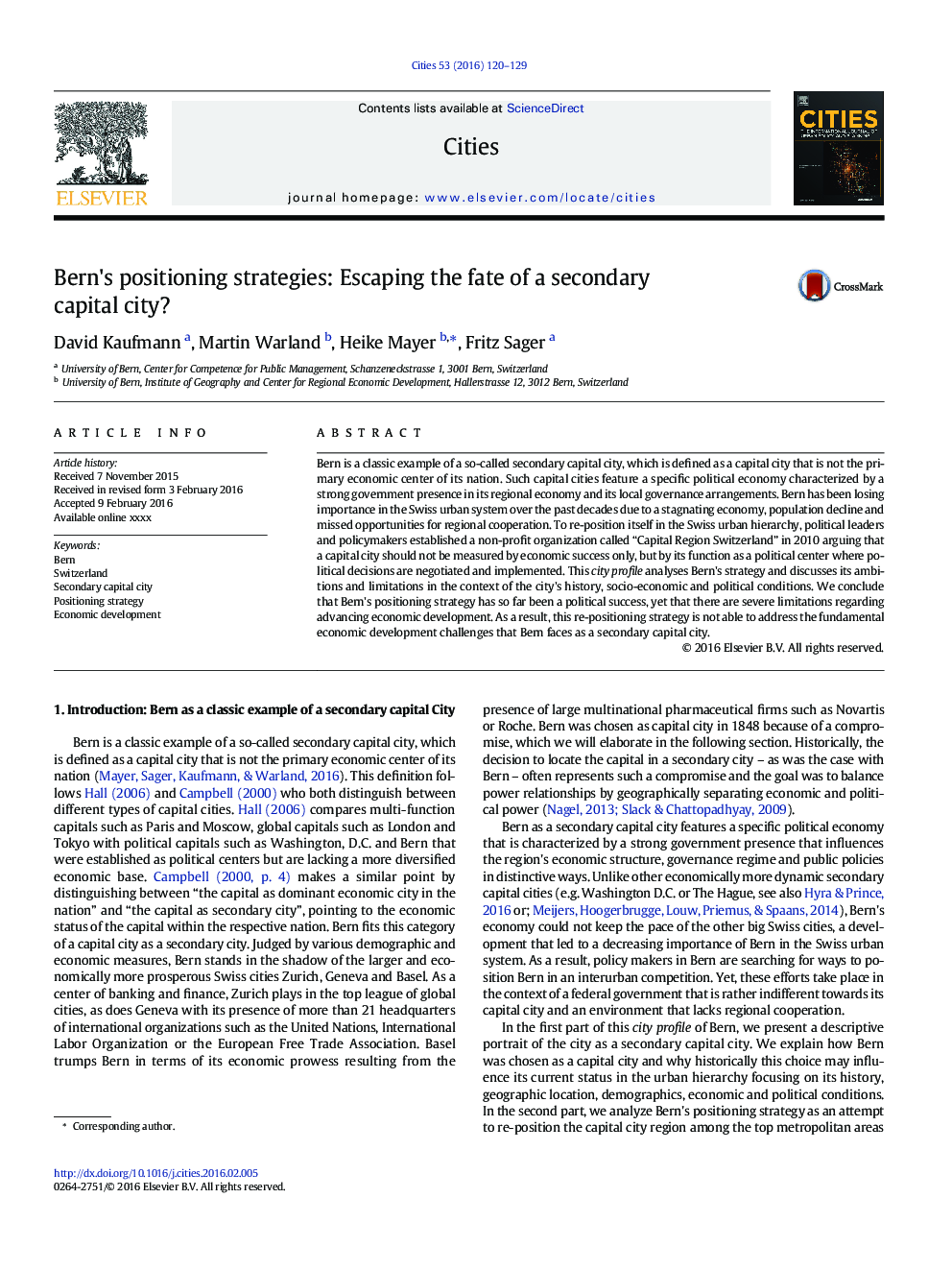| Article ID | Journal | Published Year | Pages | File Type |
|---|---|---|---|---|
| 7418235 | Cities | 2016 | 10 Pages |
Abstract
Bern is a classic example of a so-called secondary capital city, which is defined as a capital city that is not the primary economic center of its nation. Such capital cities feature a specific political economy characterized by a strong government presence in its regional economy and its local governance arrangements. Bern has been losing importance in the Swiss urban system over the past decades due to a stagnating economy, population decline and missed opportunities for regional cooperation. To re-position itself in the Swiss urban hierarchy, political leaders and policymakers established a non-profit organization called “Capital Region Switzerland” in 2010 arguing that a capital city should not be measured by economic success only, but by its function as a political center where political decisions are negotiated and implemented. This city profile analyses Bern's strategy and discusses its ambitions and limitations in the context of the city's history, socio-economic and political conditions. We conclude that Bern's positioning strategy has so far been a political success, yet that there are severe limitations regarding advancing economic development. As a result, this re-positioning strategy is not able to address the fundamental economic development challenges that Bern faces as a secondary capital city.
Keywords
Related Topics
Social Sciences and Humanities
Business, Management and Accounting
Tourism, Leisure and Hospitality Management
Authors
David Kaufmann, Martin Warland, Heike Mayer, Fritz Sager,
